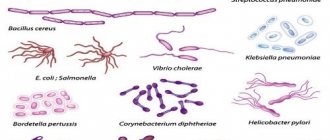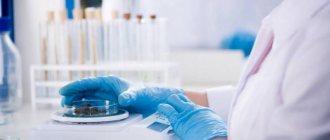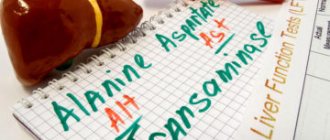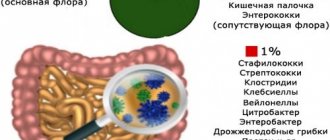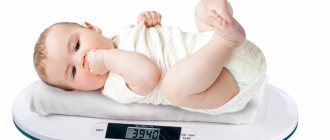Rotavirus is an infection that enters the intestines through the mouth and is more common in children. 100% of children get sick before 5 years of age. The disease gets its name from a wheel-shaped virus, rota in Latin. People get sick with it in April or September.
In adults and children over 5 years of age, the virus is less common and occurs without symptoms. When a child of two or three years old catches the infection, he is included in the group of hospitalized children: the risk of complications is high.
The disease can spread throughout the body in a matter of minutes, and dehydration occurs. Parents risk losing their child. Doctors recommend going to the hospital at the slightest suspicion.
You cannot treat a child yourself: professional assistance is provided by infectious disease specialists. If the parents have encountered the disease before and the child is over 3 years old, they try treatment at home with medications prescribed for the first time.
Infection in the intestines
Rota enters the human body from a sick person or a carrier of rotavirus infection through contact, through things, objects. The virus is transmitted through sweat and saliva.
Human rotavirus
Division and reproduction begin in the gastrointestinal tract—conditions favorable for the virus. The mucous membrane is affected. Diarrhea and dehydration occur.
They become infected through objects, a handshake, or food. The cause of infection is the habit of children biting their nails and putting their fingers in their mouths. In adults, frequent touching of lips.
By consuming unprocessed vegetables and fruits (heat treatment, under running water), there is a risk of infection entering the blood. During the summer, rotavirus infection lies dormant due to the increased temperature outside the window, and in the winter – due to the cold. Viruses are not viable at low or high temperatures.
After thoroughly washing your hands and fruits under running water, wipe them dry. There are plenty of pathogens of intestinal infections in raw water.
Rate of infection development
The infection affects the body within several days, sometimes in one day (depending on the child’s immunity). Terms – up to five days. The growth of bacteria is rapid and the symptoms are consistent.
Diagnostic signs:
- acute pain in the abdomen, vomiting, constant nausea;
- increase in temperature;
- diarrhea;
- the skin turns pale, weakness appears;
- the urine darkens and blood clots come out along with the stool.
If you notice symptoms in a child, go to the hospital and call an ambulance. This is an intestinal infection. They will tell you more specifically after taking a test for rotavirus infection, E. coli, tank culture, smear.
Features of feces: bright yellow color, pungent odor.
With rotavirus infection, the child’s eyes turn red and an inflammatory process appears in the larynx.
Upon admission to the hospital, procedures are prescribed to identify the causes. Mandatory - analysis for intestinal infections (to exclude cholera and salmonellosis), stool analysis for rotavirus. The diagnosis is made by a doctor after tests.
With proper treatment, symptoms disappear within four days to a week. After rotavirus, immunity is developed, relapse is impossible.
Adult reaction to rotavirus:
- loose stools;
- loss of appetite;
- elevated temperature.
From the moment of reaction to infection, a person carrying the virus infects his family members and colleagues. Adults with the described symptoms practically do not go to the clinic, mistaking them for poisoning.
What symptoms would be a reason to get tested for rotavirus infection?
After rotavirus infects the human body, an asymptomatic period (incubation) begins, lasting from 24 hours to 5 days.
The onset of the disease is manifested by an increase in temperature to 38.5 - 40 degrees with characteristic symptoms:
- Painful sensations in the abdominal area;
- Vomiting about four times a day (sometimes in the morning, before meals);
- No appetite;
- Lethargy and weakness;
Further, signs of acute diarrhea develop with profuse, watery, yellowish stools that have a sour odor. During the period of the most detected manifestation of the infection, the stool comes out with admixtures of mucous secretions and blood elements. With excessively frequent bowel movements, the patient develops acute dehydration, which can cause death. Therefore, at the first symptoms of the disease, you should immediately seek medical help.
The main symptoms of dehydration are loss of consciousness or a state of confusion, often a convulsive syndrome occurs.
With rotavirus infection, symptoms characteristic of respiratory diseases appear:
- Nasal congestion;
- Sore throat when swallowing;
- Hyperemia of the eyes and throat.
After five to seven days, all manifestations of the disease disappear and an improvement in general condition is noted. Having been ill once, a person develops antibodies to the virus, which in the future will prevent such an acute course when the body is infected with rotavirus.
Consequently, having suffered from this disease in childhood, the symptoms in an adult will differ significantly. The clinical picture manifests itself in a single loose stool and an increase in temperature to subfebrile. For adult patients, the infectious disease is not life-threatening, but such patients become spreaders of rotavirus.
In the hospital
If you have symptoms or suspect an infection, you should go to the hospital for help.
Differential diagnosis begins. Divided into three stages:
- At the first stage, information about the onset of the disease and symptoms is collected. In case of intestinal infection, symptoms are observed, as in acute respiratory diseases. The doctor makes sure that appendicitis does not respond to acute pain with characteristic vomiting, fever and diarrhea.
- Examination of the patient. Once a diagnosis is made, a course of treatment is prescribed.
- Examination methods - from collecting tests for infection carriage to the use of computer technology. The analysis determines the degree of the disease.
Treatment of infection: basic methods
Only a doctor can prescribe effective treatment for rotavirus infection
Infants are the most susceptible to rotavirus, so parents should call an ambulance. Before the medical team arrives, it is necessary to frequently water the baby to avoid fluid loss. When vomiting, the baby should be placed on its side so that it does not choke.
Features of treatment:
- To prevent dehydration, the patient should drink as much as possible. Rehydration therapy includes the use of Regidron. The composition of this solution includes: sodium chloride, potassium chloride, glucose, sodium citrate. Dissolve the contents of the sachet in a liter of boiled warm water. The child should be given 50 ml every 30 minutes. An adult should drink the solution in small portions throughout the day. In addition to Regidron, you can use Oralit or Glucosolan. It is important to remember that severe dehydration can lead to hypovolemic shock.
- For fever, children are given antipyretic syrups, Paracetamol or Analgin. There is no point in using candles for fever, as they cause the urge to go to the toilet and do not have a positive effect. It should be remembered that the infection dies at a body temperature of 38 degrees and there is no need to kill it.
- To get rid of intestinal flu, sorbents are prescribed: activated carbon, Smectite, Enterosgel, Sorbex and others. These drugs have antidiarrheal and detoxification properties. Sorbents bind and remove toxic substances from the body. Signs of dysbacteriosis are stopped and the patient’s condition improves. If the child refuses to take the medicine, then it can be mixed with baby puree or porridge.
- Probiotics include Probifor, Bifidumbacterin, Acylact, etc. These drugs help restore the natural intestinal flora.
More information about rotavirus infection can be found in the video:
Read: Light-colored stool during pregnancy - why and what to do?
The patient's appetite is reduced and should not be forced to eat. You can drink jelly, chicken broth. It is recommended to give liquid rice porridge cooked in water. Food should be taken in small portions so as not to provoke a gag reflex. It is allowed to eat vegetables that do not cause gas.
During treatment, the child is prohibited from giving milk and dairy products, as the growth of bacteria will increase.
Diet therapy involves eating stewed or boiled food. Fried and fatty foods are not allowed.
Self-medication at home is strictly prohibited. Antidiarrheal and antiemetic drugs should not be used. Symptoms of rotavirus such as diarrhea and vomiting are a protective reaction of the body and get rid of accumulated toxins and bacteria.
Analysis preparation
Examine stool for rotavirus. There is no need to prepare the body - it will not work due to frequent loose stools. It is prohibited to take a stool test for intestinal infections after an enema, the use of suppositories, or laxatives.
Feces are not collected from the walls of the toilet, with urine: microbiological and laboratory tests will be inaccurate. The material is collected in a container and sold in pharmacies.
Take up to 5 grams of feces with a special stick included in the kit. Available within a few hours. If feces are collected in the evening, cold storage for up to 12 hours is allowed.
It is recommended to examine the vomit and do a general urine test.
The tests determine rotavirus antigens. If the result is negative, they are not present in the stool. Shows positive - infection inside. PCR (polymerase chain reaction) and DIF diagnostics are allowed. If a false reaction occurs, the analysis will need to be repeated.
Diagnostics
To choose treatment, you need to recognize the symptoms of rotavirus infection and consult a doctor. The disease is especially severe in patients under 5 years of age. In adults and children, the signs of rotavirus are the same, but may differ in duration and intensity: lethargy, drowsiness, lack of appetite, severe gastrointestinal disorders (vomiting, frequent diarrhea, nausea, cramps), fever. In advanced cases, a red skin rash appears. To establish a diagnosis, a serological blood test and stool donation for virological testing are prescribed.
How long to wait for answers and decryption
Patients are interested in the speed of analysis, waiting for an answer, and the longevity of laboratory interpretation. Children's clinics with infectious diseases departments are often not equipped with materials for testing. But you can identify the problem in a day. It is recommended to buy a test to recognize viral pathogens.
Depending on the workload, the medical staff will find out the reasons and the explanation of tests for infectious agents. Virologists use a table with a set of codes and ciphers. Treatment is prescribed.
Routes of entry of rotavirus into the human body
Any patient is at risk, but newborns and preschool-aged children are more often susceptible to the disease. The pathogen is transmitted:
- Fecal-oral method in case of neglect of hygiene when visiting the sanitary room.
- Through drinking water that has not been pre-treated.
- When eating unwashed vegetables and fruits.
- From an already infected family member or children's group.
Rotavirus provokes electrolyte imbalance, which is difficult for a child to tolerate. Therefore, at the slightest suspicion of intestinal flu, tests should be performed.
The virus is easily transmitted, the disease progresses quickly, and the patient spreads the infection almost from the first days. The incubation period, depending on the condition of the body, lasts 1–5 days. At this time there are no characteristic symptoms. With insufficient immune protection, signs of pathology appear after 12–16 hours.
The initial period usually lasts 1 day. Then the acute form occurs and the peak occurs on days 5–7. Even if you do not seek the help of doctors, the clinical picture declines and completely disappears.
Doctors do not recommend self-medication, as there is a high risk of secondary bacterial infection and complications. Dehydration in a child without professional treatment can lead to tragedy.

